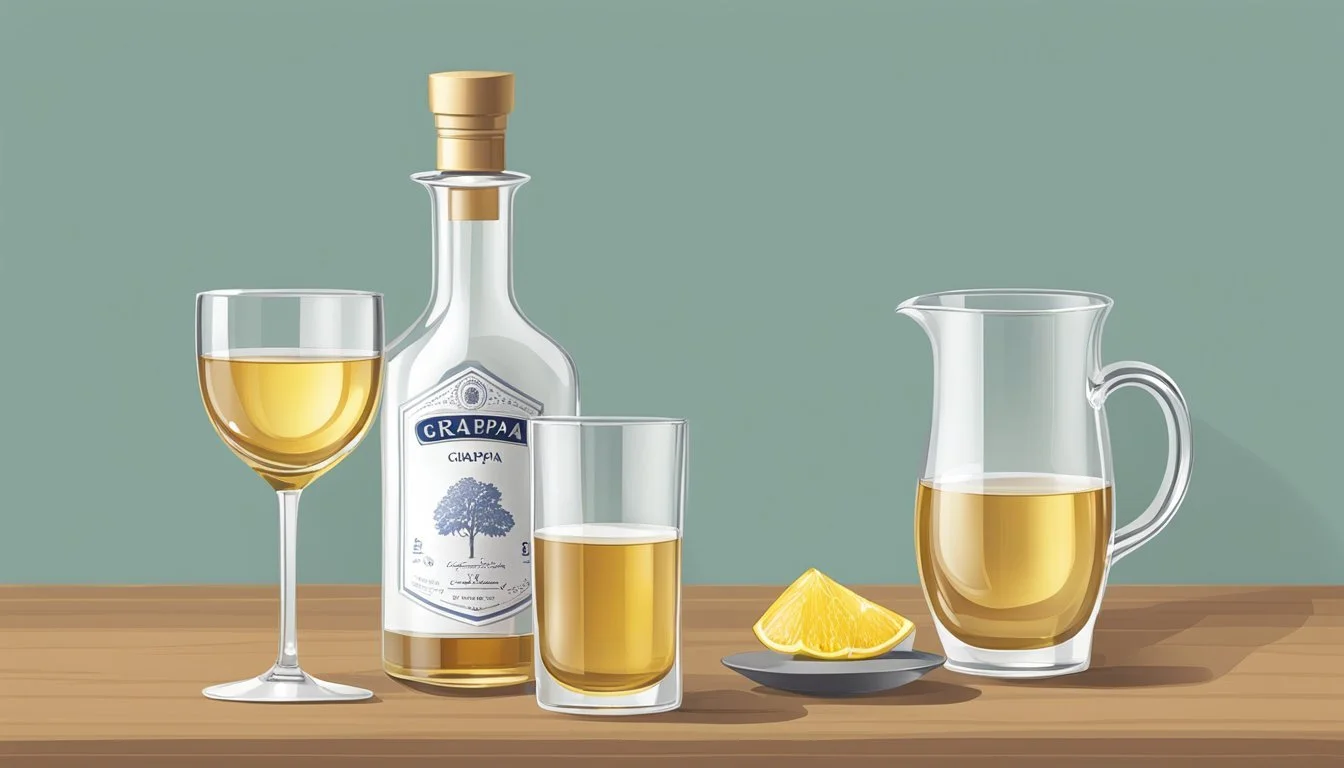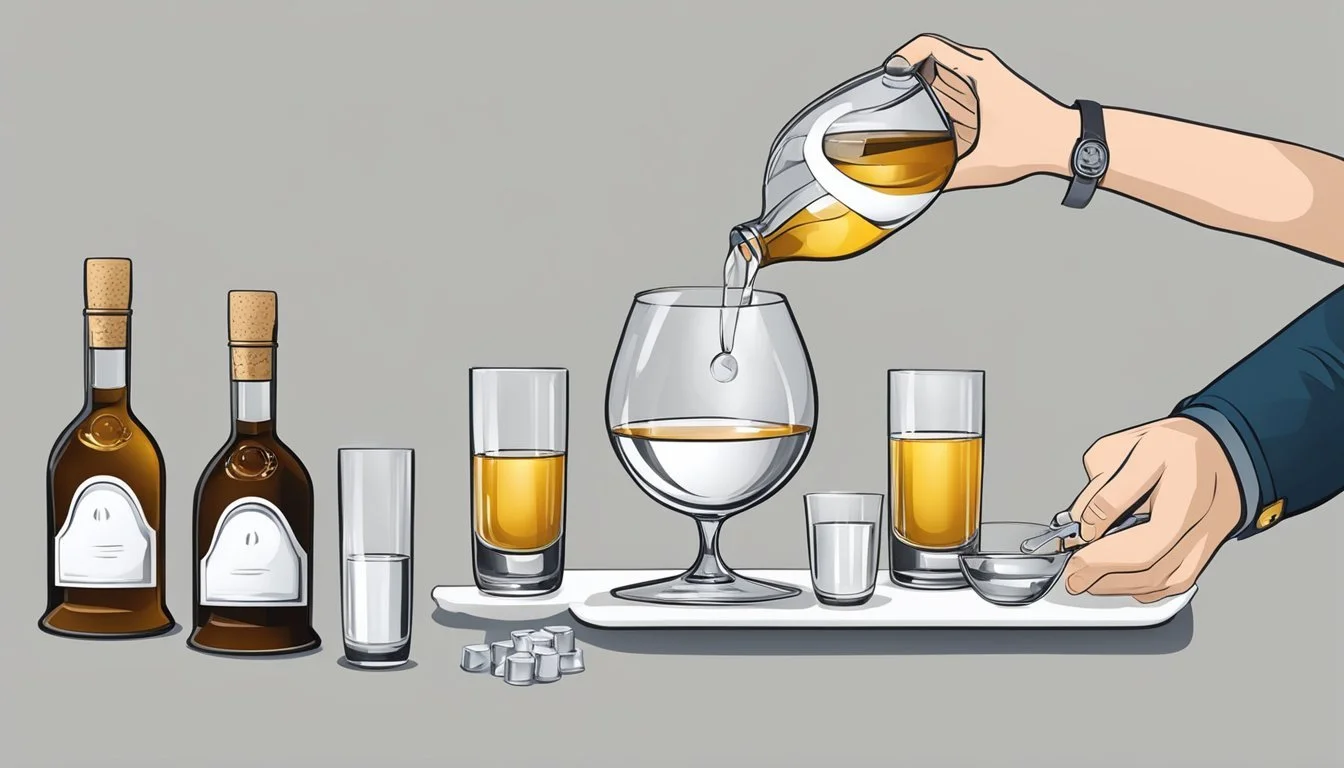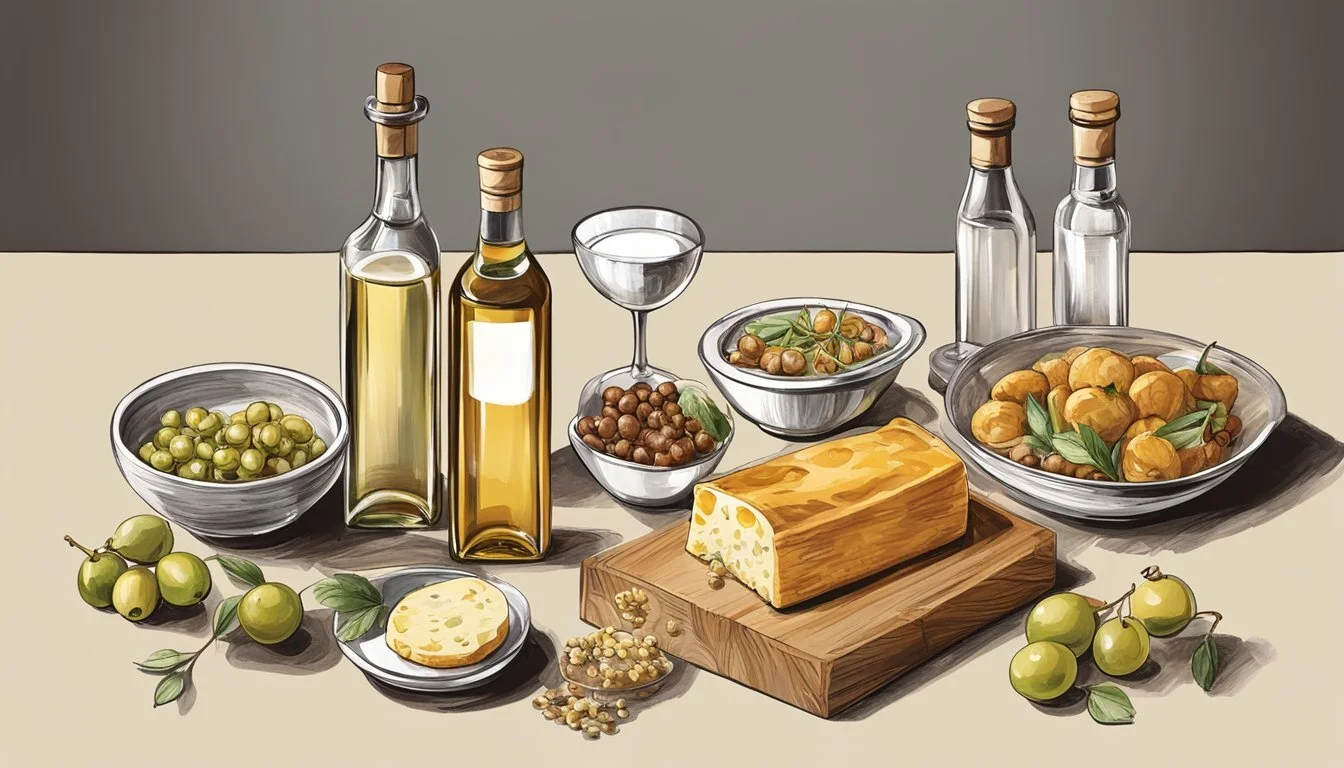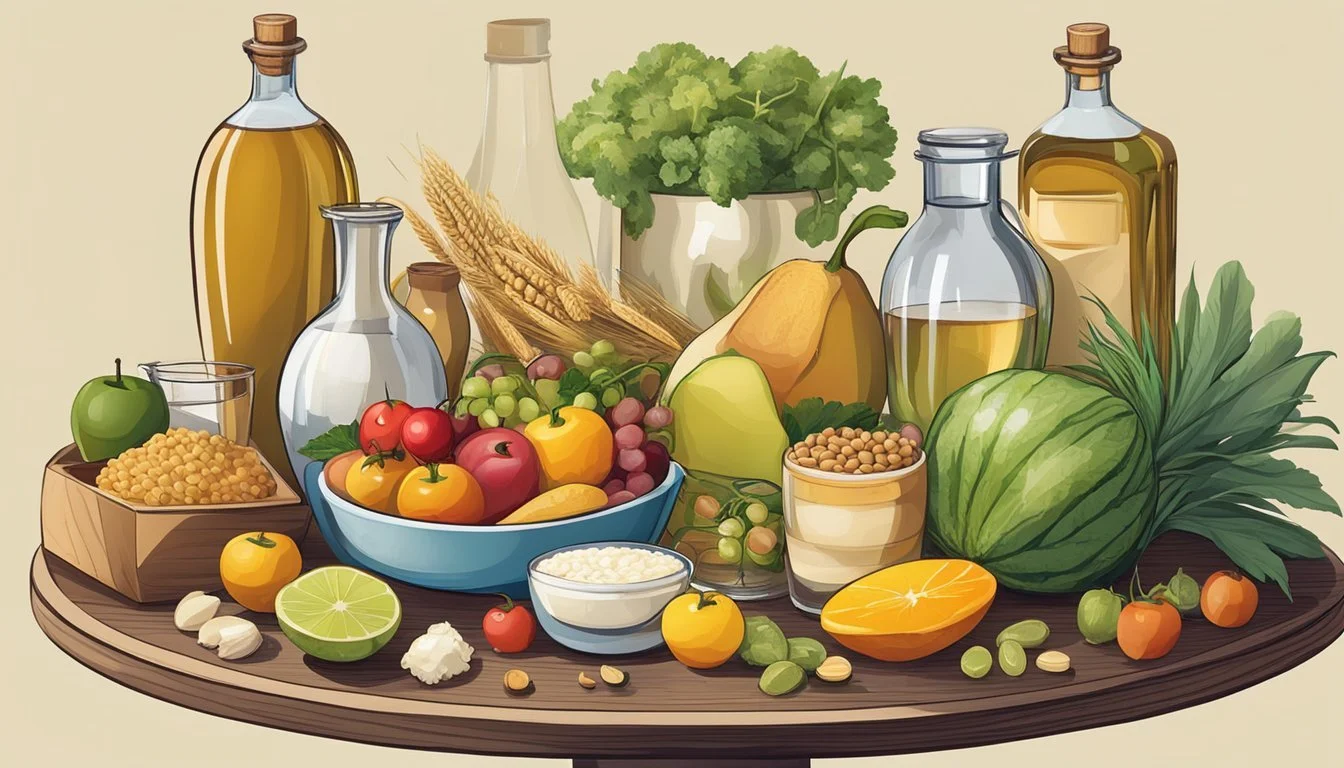How Many Servings of Grappa Is Too Much
Understanding Safe Consumption Levels
Grappa, the iconic Italian spirit made from grape must, is celebrated for its role as a digestif and its cultural heritage. Known for its potent alcohol content, typically between 35-60%, it can be easy to underestimate its strength. Consuming more than 2-3 servings in one sitting can lead to significant intoxication and health risks. Balance and moderation are crucial to enjoying its complex flavors without negative effects.
The traditional method of serving Grappa, slightly chilled and in small quantities, allows one to savor its unique and varied profiles, from the young, fruity types to the mature, intense aged varieties. Enjoying Grappa responsibly means understanding its potency and the appropriate serving sizes, ensuring a pleasurable experience without overindulgence.
Understanding Serving Sizes
When it comes to understanding serving sizes, it is crucial to differentiate between a serving size and a portion size. Serving sizes are standardized to help people follow dietary guidelines, while portion sizes can vary based on individual preferences or restaurant servings. Moderation is key to utilizing serving sizes effectively for a balanced diet.
Defining a Serving Size
A serving size is a standardized amount set by nutritional guidelines. For example, one serving of pasta is typically 1/2 cup cooked. This standard helps in following dietary recommendations and comparing different foods.
Serving sizes can include:
1 slice of bread
1/2 cup cooked pasta
8 fluid oz. of milk These standardized measurements help individuals align their consumption with nutritional goals. Restaurants often serve larger portion sizes, which can lead to overeating if portion control is not practiced.
The USDA Guidelines on Servings
According to the USDA's dietary guidelines, adults should consume 2 to 2½ cups of fruit per day. This translates to specific serving sizes such as:
1 small piece of fruit (like an apple)
1/2 cup of grapes (around 15-20 grapes)
1 cup of fruit juice
These guidelines help in maintaining a balanced diet and prevent overconsumption. Adhering to these recommended servings ensures individuals get the right amount of nutrients without excessive calorie intake. The guidelines cater to various food groups, providing a framework for a balanced diet.
Importance of Portion Control
Understanding portion control is essential for maintaining a healthy diet. Even though the serving size is standardized, portion sizes can vary. For instance, a restaurant meal might contain multiple servings, leading to increased calorie intake.
Key tips for portion control include:
Using smaller plates
Measuring food with cups and scales
Reading food labels for serving size information
Being mindful of portion sizes helps in preventing overeating and ensures moderation. This practice is especially important when dining out, where portions are typically larger than the standardized serving sizes. By controlling portions, individuals can better adhere to dietary guidelines and avoid the pitfalls of overconsumption.
Nutritional Considerations
Grappa, an Italian alcoholic beverage, provides various nutrients and should be consumed in moderation. Understanding its nutritional impact is essential for maintaining a balanced diet and overall health.
Calories and Macronutrients
Grappa is high in calories, primarily due to its alcohol content. A standard shot (1.5 ounces) contains approximately 100-120 calories. It has no significant amount of fat, protein, or fiber, and its carbohydrate content is minimal. While it provides quick energy, excessive consumption can lead to weight gain and other health issues.
The absence of fat, protein, and fiber means Grappa doesn't contribute significantly to satiety or nutritional needs. It also has little nutritional value beyond its caloric content, lacking essential nutrients like vitamins and minerals.
Fruits and Vegetables in Diet
Incorporating a variety of fruits and vegetables into one's diet is crucial. These foods provide essential vitamins, minerals, and fiber that Grappa lacks. For instance, fruits like grapes (used to make Grappa) are rich in Vitamin C, potassium, and antioxidants, promoting immune system and digestive health.
Regular consumption of fruits and vegetables helps balance the diet, offering nutrients that support overall health. Unlike Grappa, which offers limited nutritional benefits, fruits and vegetables should be a cornerstone of daily dietary intake.
Role of Fiber and Vitamins
Grappa does not contain significant amounts of fiber or vitamins. Fiber is essential for digestive health, aiding in bowel regularity and preventing constipation. It also helps in managing blood sugar levels and lowering cholesterol.
Vitamins, such as Vitamin C found in grapes, are vital for maintaining a robust immune system and promoting skin health. Since Grappa lacks these nutrients, it’s important to obtain them from other sources, especially fruits and vegetables.
While Grappa can be enjoyed in moderation, balancing its intake with nutrient-rich foods is essential for maintaining a healthy diet.
Health Impact of Overconsumption
Overconsumption of grappa can lead to significant health risks, particularly affecting disease risk, sugar intake, and the impact of excess fats. Precisely, it can heighten the chances of chronic conditions and disrupt bodily functions.
Alcohol and Disease Risk
Excessive consumption of grappa, primarily because of its high alcohol content, poses serious health risks. Alcohol is linked to an increased risk of heart disease, liver disease, and certain types of cancer.
The American Heart Association warns that heavy drinking can lead to high blood pressure, heart failure, and even stroke.
Studies demonstrate that excessive alcohol intake can also contribute to chronic inflammation and weaken the immune system. Nutritionists often emphasize moderation to minimize these risks and recommend integrating grappa within a balanced diet.
Sugar Intake and Health
Grappa, while not as sugary as liqueurs, can still contribute to overall added sugars when consumed in excess. High sugar intake is connected to obesity, diabetes, and heart disease.
Consuming too much sugar can spike blood sugar levels and lead to insulin resistance over time. This is particularly concerning for individuals already at risk of diabetes.
Dietitians stress the importance of keeping an eye on sugar intake from all sources to maintain optimal health. This is especially crucial when factoring in the sugars from alcoholic beverages like grappa.
The Effects of Excess Fats
Though grappa itself may not contain substantial fats, the context in which it is consumed can matter. Often, high-fat foods accompany alcohol consumption, contributing to an unhealthy diet.
A diet high in unhealthy fats can raise cholesterol levels and increase the risk of heart disease and stroke. Furthermore, high fat intake can lead to obesity, compounding the health risks associated with alcohol use.
Nutritionists advise pairing grappa with healthier food choices to avoid excess fat intake and promote heart health. Implementing responsible drinking guidelines can mitigate potential harmful effects.
Determining Individualized Servings
When determining individualized servings of Grappa, it's crucial to consider factors like age, gender, and activity level. These elements help tailor servings to meet unique needs and avoid potential health risks.
Taking Age and Gender Into Account
Age and gender significantly influence the appropriate amount of Grappa consumption. For instance, younger individuals and older adults often have different alcohol tolerance levels.
Males typically have a higher tolerance compared to females due to physiological differences. This means men might consume larger servings safely, while women often need to adhere to smaller amounts.
Older adults should be cautious, as age-related changes in metabolism and potential interactions with medications can increase sensitivity to alcohol. Monitoring and adjusting intake can prevent adverse effects.
Activity Level and Caloric Needs
A person's activity level and caloric needs also play a crucial role in determining suitable servings of Grappa. Individuals with higher physical activity levels generally have higher caloric requirements.
For those engaging in regular and intense physical activity, alcohol consumption should be carefully integrated into their overall dietary needs to prevent excess calorie intake. Moderation is key, ensuring that caloric intake from Grappa does not impede nutritional goals.
On the other hand, sedentary individuals or those with specific medical history and dietary requirements need to be more cautious. Their lower calorie needs and possible health constraints necessitate stricter limits on servings of Grappa.
Food Pairings
Grappa is a versatile spirit that pairs well with a variety of foods, enhancing dining experiences.
Cheese and Nuts
For a classic choice, pair aged Grappa with strong cheeses like Parmigiano-Reggiano or Gorgonzola. The rich flavors complement each other. Nuts, particularly roasted ones, also enhance the nutty notes in aged Grappa.
Fresh and Dried Fruits Fresh fruits like peaches, pears, and apples work well with younger, fragrant Grappa. The light and fruity profiles blend harmoniously. Dried fruits, such as figs or apricots, are best with aged Grappa, where the mature, toasted flavors shine.
Fish and Lean Meats
Fish, especially when simply prepared, complements the lightness of a young Grappa. Lean meats like grilled chicken or turkey also pair well, as they do not overshadow the spirit’s nuances.
Whole Grains and Salads Whole grain dishes, such as quinoa or farro salads, benefit from Grappa's presence. Its crispness adds depth to the meal. Salads with a citrusy dressing align perfectly with the spirit’s bright notes.
Healthy Eating When focusing on low-fat and healthy eating, consider pairing Grappa with light dishes. Grilled vegetables, lean cuts of poultry, and whole grain salads are ideal companions. These combinations support a balanced diet while still enjoying Grappa’s complexity.
Table of Pairings
Food Type Grappa Pairing Cheese Aged Grappa Nuts Aged Grappa Fresh Fruits Young Grappa Dried Fruits Aged Grappa Fish Young Grappa Lean Meats Young Grappa Whole Grains Young or Aged Grappa Salads Young Grappa Healthy Dishes Young or Aged Grappa
Grappa's adaptability makes it a fine addition to various culinary experiences, adding depth and character to both simple and complex dishes.
Grappa Specifics
Grappa is a traditional Italian spirit distilled from the pomace left over from winemaking. It has a high alcohol content and comes in various types, each enjoyed differently. Knowing these specifics can help you appreciate grappa more and understand safe consumption practices.
What Is Grappa?
Grappa is a spirit distilled from the pomace (skins, seeds, and stems) left after winemaking. Its origin lies in Italy, and it must be produced there to be called grappa. Unlike other spirits, grappa is made from the remnants of grapes rather than grains or other ingredients.
Varieties include young (bianca) grappa, aged (invecchiata) grappa, and aromatic grappa, each offering a distinct flavor profile ranging from fruity to woody.
Grappa's Alcohol Content
Grappa has a potent alcohol content, usually ranging from 35% to 60% ABV (alcohol by volume). This high alcohol concentration can lead to faster intoxication compared to beverages like wine or beer.
Young Grappa: Typically 35-40% ABV
Aged Grappa: Often 40-60% ABV
The type and age of the grappa significantly influence its strength and complexity.
Safe Consumption Limits for Grappa
Given its high alcohol content, consuming grappa requires caution. Standard recommendations suggest no more than one to two servings per day, with a standard serving size being about 1 ounce (30 ml).
For individuals unfamiliar with high-proof spirits, starting with smaller pours is advisable. Key Factors include individual tolerance, body weight, and overall health. Remember, grappa is best enjoyed in moderation to appreciate its rich flavors without adverse effects.
Incorporating Grappa in a Balanced Diet
A balanced diet can include grappa as an indulgence; aligning it with food groups and practicing moderation ensures it complements rather than disrupts healthy eating habits.
Matching Grappa with Food Groups
Grappa pairs well with various foods, adding unique flavors to meals. When enjoyed with cheese like Parmigiano-Reggiano or Pecorino, its strong taste balances the creaminess. Fruits such as grapes, figs, and dried apricots highlight the spirit's fruity notes, creating a harmonious blend.
Incorporating nuts like almonds or walnuts can enhance grappa’s complex flavors. These combinations not only enrich the taste but also provide additional nutrition from proteins and healthy fats. Including fish dishes, particularly those with rich flavors, can also complement grappa, creating a luxurious dining experience. Using a variety of these food groups ensures a balanced inclusion of this digestif.
Moderation and Occasional Indulgence
Moderation is key when incorporating grappa into a balanced diet. Given that grappa typically has an alcohol content between 35% and 60% ABV, enjoying it in small quantities helps avoid negative health impacts. An occasional indulgence, such as one small serving after a meal, aligns with healthy eating guidelines.
It’s important to manage daily servings to maintain nutritional balance. Limiting consumption to special occasions or once a week can ensure it remains a treat rather than a habit. The key is to integrate grappa into one's diet as part of a broader, varied approach to nutrition and healthy eating.
Health Benefits of Grape-Derived Products
Grape-derived products, such as grapes, grape juice, and wine, offer a variety of health benefits. These benefits stem from their rich content of phytochemicals and antioxidants, which play essential roles in maintaining overall health and preventing many chronic diseases.
Phytochemicals and Their Effects
Grapes are rich in polyphenols such as resveratrol and anthocyanins. Resveratrol has been shown to support heart health by reducing inflammation and preventing the oxidation of LDL cholesterol.
Anthocyanins, found primarily in dark red and purple grapes, help lower blood pressure and improve cognitive function.
Phytonutrients in grapes also support a healthy gut microbiome, which can improve digestion and overall immune health. These compounds help reduce oxidative stress, thereby protecting cells and tissues from damage.
Antioxidants in Grapes
Grapes contain a high amount of antioxidants, including vitamins A and C, which help protect the body from free radicals.
Regular consumption of grape products can enhance heart health by improving blood flow and reducing the risk of heart disease.
The natural sugars and water content in grapes make them a hydrating and low-calorie option, beneficial for weight management.
Antioxidants play a role in reducing oxidative stress, which can protect against diseases related to aging, such as Alzheimer’s disease and other cognitive disorders.
Cultural and Social Aspects of Drinking Grappa
Grappa is deeply embedded in Italian culture and traditions. In rural areas, it was traditionally enjoyed by farmers and laborers. They valued its strong, warming properties after a hard day’s work.
In Italy, sharing* grappa with friends and family is a common social activity. It’s often served at the end of meals as a digestive aid, known as a digestivo. This practice highlights its role in both social and culinary traditions.
Grappa can also be enjoyed in various ways. Some Italians mix it with espresso to create caffè corretto, emphasizing its versatility in different contexts.
Different regions in Italy have their own special production methods, which reflect local traditions and preferences. Premium grappas from regions like Piedmont and Veneto are recognized for their distinct qualities.
The consumption of grappa is not just about drinking but also appreciating the craftsmanship involved in its production. Connoisseurs often savor premium varieties that are aged and enjoy complex flavors.
The social aspect of drinking grappa is evident in Italian gatherings where it symbolizes hospitality and warmth. Whether consumed at home, in restaurants, or during celebrations, grappa brings people together.











